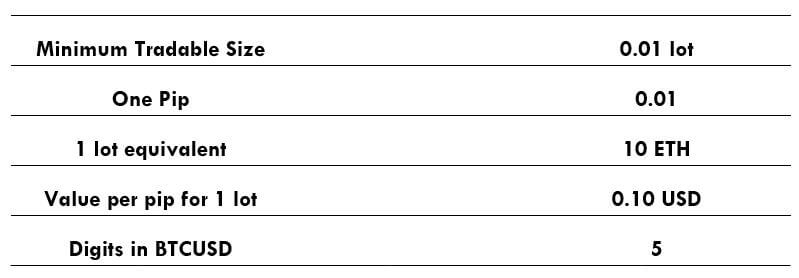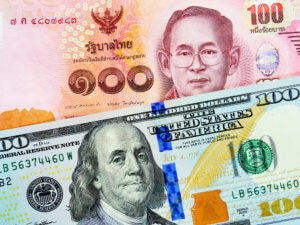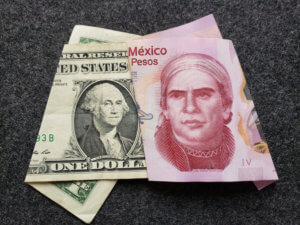Introduction
Trading cryptocurrencies is similar to trading in the Forex market, but the only difference being, both base and quote currencies are not fiat currencies. In crypto pairs, one of them is a virtual currency, and the other is a fiat currency. ETH/USD is a cryptocurrency pair, which is an abbreviation for Ethereum against the US Dollar. Participants can trade them via Forex brokers or through cryptocurrency exchanges.
Understanding ETH/USD
The value of ETHUSD represents the value of the US Dollar that is required to purchase one. It is quoted as 1 ETH per X USD. For instance, if the market price of ETHUSD is 170.46, then around 170 US Dollars are needed to buy one ETH.
ETH/USD Specifications

Spread
The difference between the bid price and the ask price marked by the brokers is called the spread. Spread is the main source of revenue for brokers. Spread on major and minor currency pairs is typically very low. But, in cryptocurrencies, the spread is usually high. Below are the spread values of ECN & STP accounts for the ETH/USD pair.
- Spread on ECN: 200 pips (2 USD)
- Spread on STP: 250 pips (2.5 USD)
Fee
A Fee is applicable only on ECN accounts and the pro accounts of brokers. Typically, it is between 40-50 pips.
Slippage
Slippage is the difference between the price at which a trader opened a position and the price given by the broker. Due to the high volatility of the market and slow execution by the brokers, slippage occurs.
Trading Range in ETH/USD
Below is the representation of the volatility from minimum to maximum for ETHUSD in different timeframes. These numbers are very helpful in assessing one’s risk on a trade.

Procedure to assess Pip Ranges
- Add the ATR indicator to your chart
- Set the period to 1
- Add a 200-period SMA to this indicator
- Shrink the chart so you can assess a large time period
- Select your desired timeframe
- Measure the floor level and set this value as the min
- Measure the level of the 200-period SMA and set this as the average
- Measure the peak levels and set this as Max.
ETH/USD Cost as a Percent of the Trading Range
With the application of the volatility values with the total cost on the trade, the variation in the cost of a trade can be assessed. To do so, the ratio between the total cost and volatility is taken and expressed in terms of a percentage.
The magnitude of the costs represents how high the costs are. If the percentages are large, it indicates high costs and vice versa.
ECN Model Account
Spread = 200 | Slippage = 15 |Trading fee = 45
Total cost = Slippage + Spread + Trading Fee = 15 + 200 + 45 = 260

STP Model Account
Spread = 250 | Slippage = 15 | Trading fee = 0
Total cost = Slippage + Spread + Trading Fee = 15 + 250 + 0 = 265

Trading the ETH/USD
Cryptocurrencies can be traded just like any other asset. In ETHUSD, the volatility is good enough for both short-term and long-term traders. Though the volatility values appear to be high, they don’t have a large reflection on your profit/loss. This is because, unlike forex currencies where one lot was equivalent to 100,000 units of the base currency, one lot in ETHUSD represents only 10 units of ETH.
From the above volatility table, it is seen that the costs are more when the volatility of the market is low and is less when the volatility is high. So, trading this pair majorly depends on the type of trader you are. For example, scalpers might trade when the volatility is high to get the greatest number of pips in a short amount of time. If they do so, they can get the benefit of lower costs.
In general, costs on a trade can be reduced by placing orders as ‘limit’ or ‘stop.’ In such orders, the slippage becomes nil. Hence, the total cost would be brought down to a good extent. The cost variations for limit orders or stop orders are given below for your reference and comparison.
ECN Model Account (Using Limit Orders)
Spread = 200 | Slippage = 0 |Trading fee = 45
Total cost = Slippage + Spread + Trading Fee = 0 + 200 + 45 = 245






